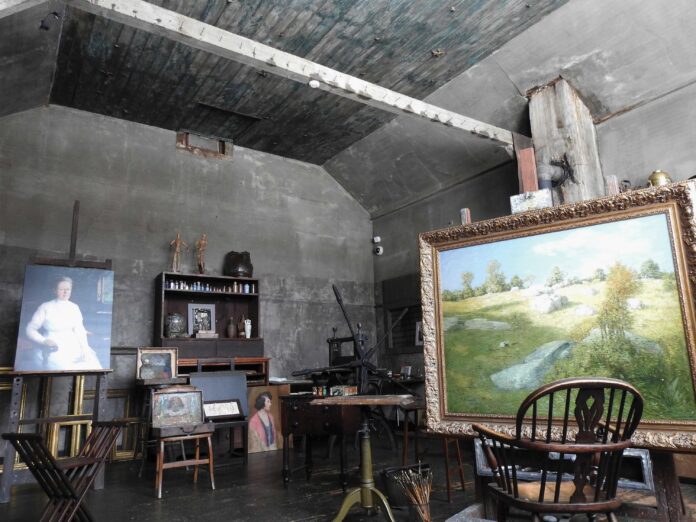
Where Creativity Happens: Follow us inside the homes and art studios of these remarkable makers.
Where Creativity Happens: The Lure of Artists’ Homes and Art Studios
By Valerie A. Balint
Daniel Chester French’s Abraham Lincoln in the Lincoln Memorial (1914–22, Washington, D.C), Frederic Edwin Church’s Niagara (1857, National Gallery of Art), and Grant Wood’s American Gothic (1930, Art Institute of Chicago): these three icons of American art each transcend their physicality.

The Lincoln Memorial has become synonymous with fundamental ideals of democracy, social justice, and the right to assemble freely in protest or celebration. It has become a place of pilgrimage for millions and is perhaps the most famous American artwork of all. Niagara signifies Americans’ ties to our grand landscape as linked to national identity, and to our National Parks system, which is exceptional in the world. Church’s painting has come to represent the exact vantage point we conjure up when picturing the falls and has been reimagined endlessly, even by contemporary artists such as Annie Leibowitz. Wood’s enigmatic commentary on rural life is likely one of the world’s most widely reproduced and re-appropriated images, transformed onto T-shirts, beach towels, and “paper doll” magnets. These masterworks are foundations of America’s cultural vocabulary.
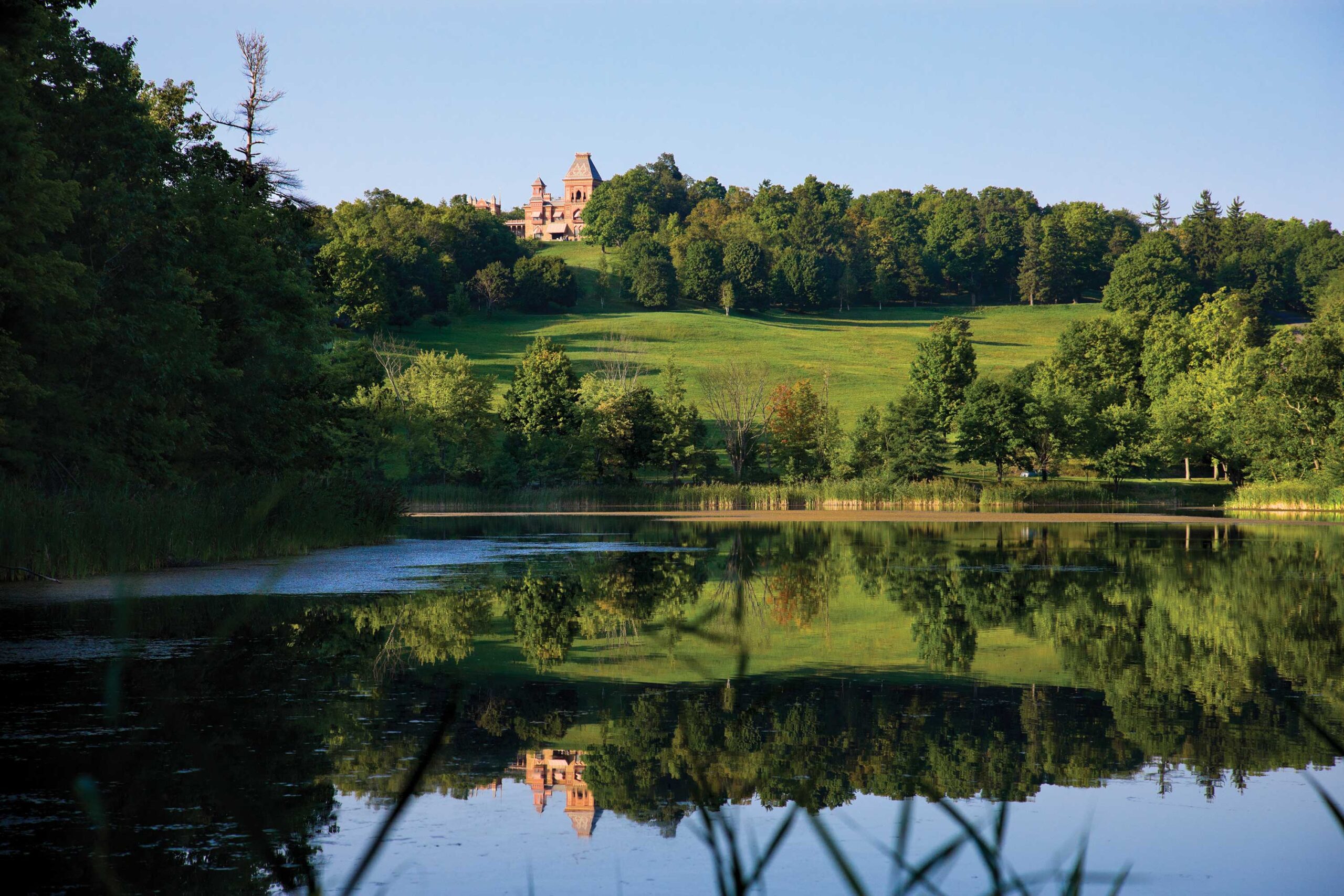
But it is easy to forget that these objects were made by specific people in specific places, created through rigorous physical work and mental engagement by makers who lived in places that both inspired and were transformed by them. Preserved artists’ homes and studios — French’s bucolic Chesterwood (Stockbridge, Massachusetts), Church’s majestic Olana (Hudson, New York), and Wood’s ingeniously compact home and studio space (Cedar Rapids, Iowa) — offer novices, devotees, and connoisseurs alike an opportunity to immerse themselves in the locus of an artist’s creative process, complex personal narrative, and — in many instances — artistic experimentation. This promise of the experiential represents the core ethos of the Historic Artists’ Homes and Studios network, a program of the National Trust for Historic Preservation.
A NATIONWIDE PARTNERSHIP
Historic Artists’ Homes and Studios (HAHS) is a professional network comprising 44 (and still growing) preserved artists’ homes and studios throughout America, all now open as public sites. The National Trust for Historic Preservation created the program in 1999, with lead support from the Henry Luce Foundation, to support places that tell the rich stories of our nation’s art history. Collectively, these member sites represent the legacy of more than 300 visual artists across 21 states and three centuries. Together, they engage more than 1 million visitors annually in meaningful experiences that link creativity to place.
The network represents the only program in the nation dedicated to providing professional support to this unique category of preserved sites, serving as a model for similar consortiums overseas. It is the leading voice promoting public awareness of the important role that artists’ residences and workplaces have played in the development of our nation’s art.
Member sites reflect the breadth and depth of art history in the U.S. and include places dedicated to iconic painters and sculptors such as Thomas Cole, Edward Hopper, and Augustus Saint-Gaudens, as well as those celebrating decorative arts practitioners such as furniture maker Sam Maloof (Alta Loma, California) and photographers like Alice Austen (Staten Island, New York). In addition, there are several important artists’ colonies, including the impressionist enclave at the Florence Griswold home (Old Lyme, Connecticut), that served as creative hubs during their heydays.
These preserved sites include artists both well-known and less familiar. Andrew Wyeth, the central figure among three generations of artists, was fueled by the environment of his boyhood in Chadds Ford, Pennsylvania, and by the nearby Kuerner Farm to create enduring images in a converted schoolhouse. To visit is to understand better both his works and the complex and deeply introspective person who remained inspired by, and close to, his childhood home.

By contrast, Theodore C. Steele, American impressionist and member of the Hoosier Group, moved to rural Indiana and transformed his landscape, which then became a favored subject. The walls and mantels of the house he designed and helped build are adorned with quotations that convey his personal credo as well as a painterly ethos, including: “Every morning I take my hat off to the beauty of the world.”
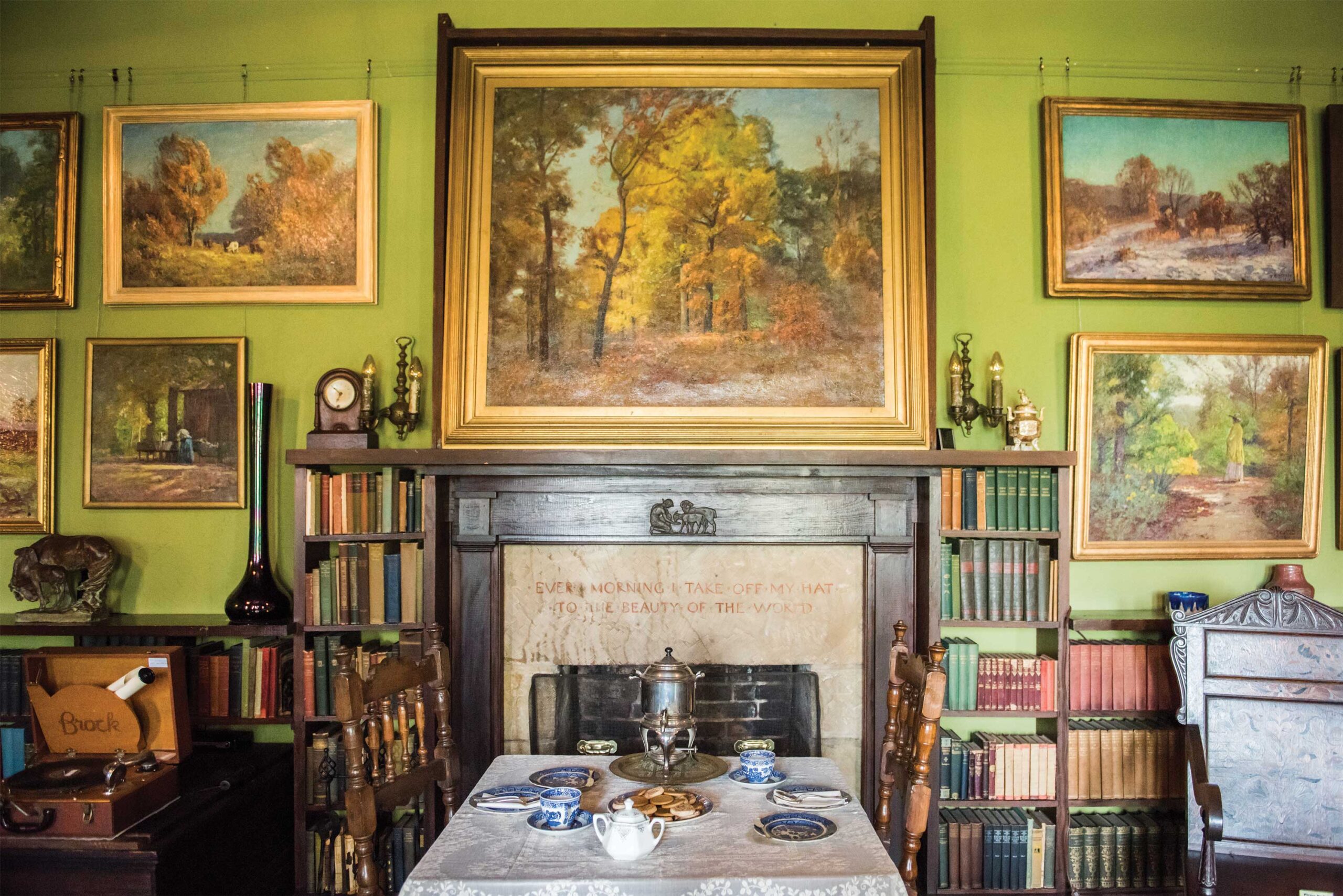
No less personal is the Arts and Crafts home that painter Grace Hudson designed in Ukiah, California, with her ethnographer husband, set in a region inhabited by the indigenous Pomo peoples. The couple lived among the tribes and documented their disappearing culture — albeit through decidedly Western eyes. Less known today, Hudson and her imagery were incredibly popular in her time and now warrant rediscovery.
IN THE INNER SANCTUM
Stepping into an artist’s studio invites alchemy; secrets are revealed that cannot manifest on a museum or gallery wall. The enticing rows of patina compounds in jars, wire armatures, and chiseling tools found in sculptor Ann Norton’s Florida studio — or the small modeled maquettes Thomas Hart Benton used in his St. Louis studio to compose figurative arrangements for his monumental painted mural cycles — make clearer the complex processes involved in making art.
Some studios are replete with props and costumes, such as the authentic indigenous artifacts that appear in works by the Montana painter Charles M. Russell and Taos artists Henry Sharp and E.I. Couse. Other artists outfitted studios with devices of their own design to aid in their efforts. Daniel Chester French created a section of rail track that extends beyond his studio doors, enabling him to move large-scale works in progress outside to contemplate changes in natural light and perspective. Denver-based artist and educator Vance Kirkland rigged a series of straps from the ceiling so he might paint suspended over the large canvas on his worktable.
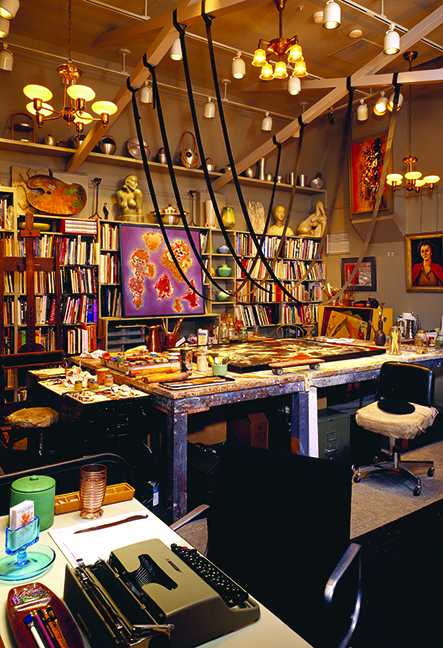
Perhaps nowhere is process felt more acutely than in the studio Jackson Pollock (and later Lee Krasner) used at their home in East Hampton, Long Island. The impossibly dense paint-splattered floor (left by Pollock) coupled with painted remnants of gestural arcs on the walls (left by Krasner) immerse visitors in their respective processes.
Similarly, the roaring surf that ceaselessly pounds against the rocks outside Winslow Homer’s Maine studio places visitors directly within one of his masterful coastal landscapes.
BEYOND THE STUDIO WALLS
These sites have become places to learn about artists and their art, but they also invite other types of inquiry. In these personal spaces, unfettered by clients or critics, artists were free to experiment and expand beyond established boundaries. Often they responded to the tension between inspirations drawn from their locales and the impulse to shape those same locales to represent their own aesthetic sensibilities. Many sought (and achieved) the integration of the natural, the built, and the collected. The result? Tangible autobiographies of sorts that evolved — sometimes over decades, beyond the timeframe of any singular work’s production or a career-defining moment. In their homes and studios, painters, sculptors, and decorative artists could redefine themselves as architects, landscape architects, interior designers, and even curators. Grant Wood outfitted his space with metalwork fixtures he handcrafted. Chicago Imagist Roger Brown adapted a commercial building to serve as home and studio, but also to be what he deemed “a museum” to house his vast collections.
Visitors can discover new facets of an artist they thought they knew, as well as re-manifestations of the familiar, perhaps revealed in a different guise. Seemingly disparate environments like Church’s Olana and Russel Wright’s Manitoga are two examples where such synergies can be found. Both represent examples of holistic environments conceived to encompass multidisciplinary forms of expression. Church’s Persian-fantasy home, an amalgam of inspirations from his sojourn to the Middle East and his imagination, sits within the landscape he spent 40 years perfecting, one worthy of any Hudson River School composition. Church reveled in color, grand proportion in relationship to intricate detail, panoramic composition, and theatricality in both life and art. His decades-long effort is now recognized as a work of art itself.
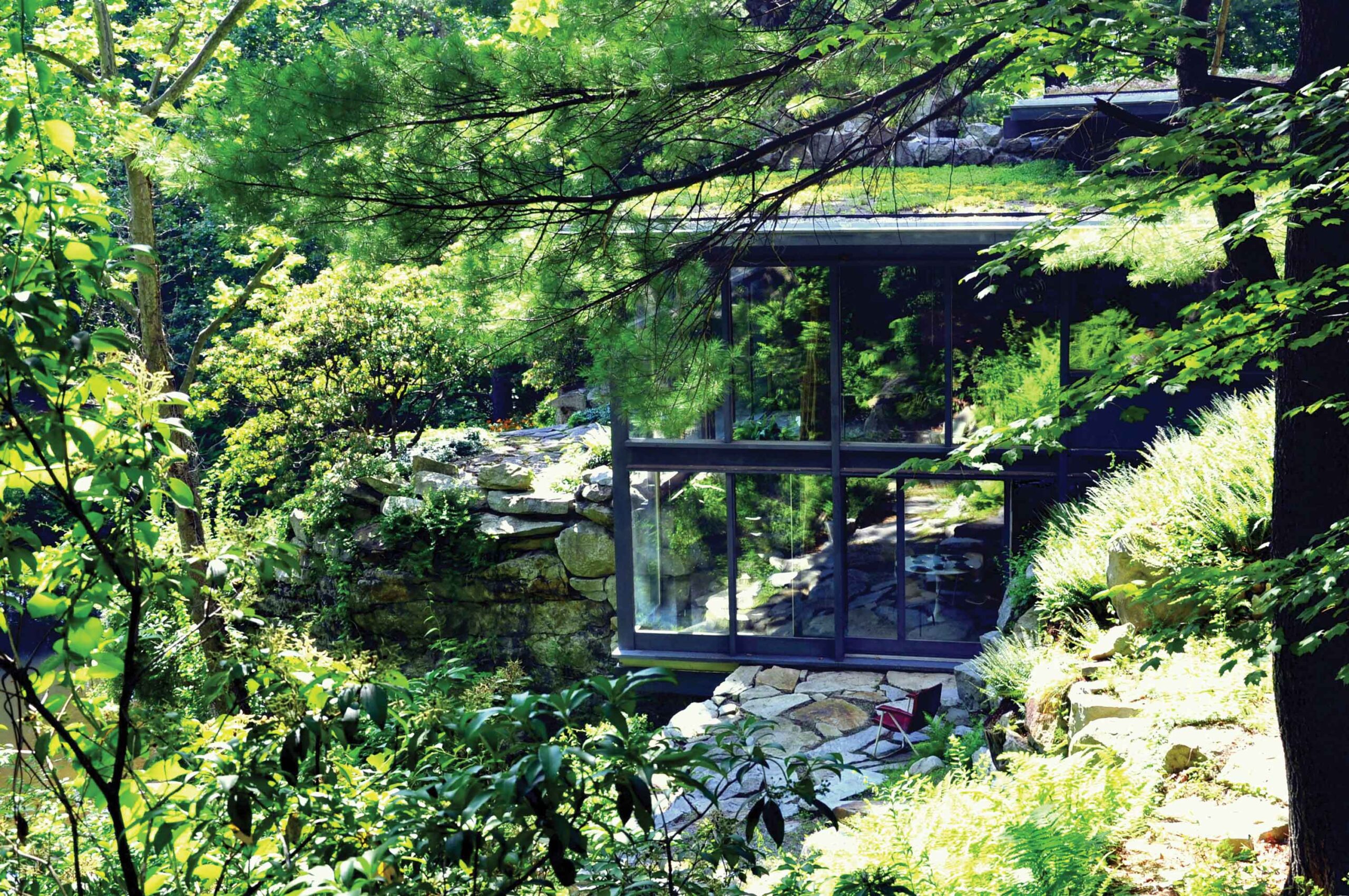
Similarly, industrial designer Russel Wright’s modernist integration with nature at Manitoga (Garrison, New York) is a totality of art and design. In a home built on a former industrial site, Wright changed the tableware and other fittings with the seasons and was able to enact the principles outlined in his 1950 publication Guide to Easier Living. His experimentations with natural elements — like a pressed butterfly screen, stone doorknobs, and birch bark-wrapped doorways — under-score that any of these beautifully executed designs could be extracted and hold pride of place under a museum vitrine, but are best understood in their original context.
Numerous sites reflect similar impulses by their artist owners, including those who transformed existing buildings. Donald Judd’s live-work environment at 101 Spring Street in New York City’s SoHo neighborhood, an erstwhile sewing factory, became an informal teaching salon and an installation of contemporary works by himself and colleagues, a concept he pursued further in Marfa, Texas. Georgia O’Keeffe’s adobe compound in Abiquiú, New Mexico, which she completely transformed to satisfy her minimalist preferences, inspired many of her works.
Still other artists chose to move beyond traditional concepts of studio and display altogether, such as Fonthill, the fantastical creation of tile maker Henry Chapman Mercer, in Doyles-town, Pennsylvania. Mercer invented a method of building with concrete, eschewing the conventional construction norms of his day, while also including exacting, but reimagined, architectural elements that he encountered on his European travels. The resulting tableau presents a dizzying display of his signature tiles, encyclopedic ceramics, and book collections, which all have become part of the larger installation.

A more recent example of this experimental relationship between working and living spaces is conceptual artist David Ireland’s architectural sculpture: his Victorian home in San Francisco’s Mission District shatters previous conceptions of how art and life can continuously interact in the same space and strict classifications of painting, sculpture, and performance. Ireland, who died only 11 years ago, famously asserted, “You can’t make art by making art.” Instead, he made art a part of daily living, transforming his traditional home into a holistic installation that he worked for years to create, in part by covering his walls with layer upon layer of polyurethane that now glows like amber. The house, restored and then opened to the public in 2018, illustrates our increasing desire to engage with artist spaces.
These examples represent only a fraction of the innovative spaces that await visitors to the Historic Artists’ Homes and Studios.
VESSELS OF ART AND COLLECTING
Many of these diverse sites are exquisite examples of design and decoration, reinforcing artists’ abilities to compose, combine color, and harmonize. During this unprecedented time, as many of us work from home (as artists often do) and commune more deeply with our personal spaces, the implications of wall color choice and the objects we surround ourselves with become more pronounced. All aesthetic choices, conscious or unconscious, say something about who we are. So, too, for artists, who often hang their walls or grace their landscapes with artworks of their own design. Many sites boast large collections or works by the artists who lived there, giving visitors unparalleled opportunities to explore their oeuvre.
Still other sites incorporate works created in situ, such as the abstract frescos George L. K. Morris and Suzy Frelinghuysen installed throughout their modernist home in Massachusetts, or the epic mural cycle that self-taught African American artist Clementine Hunter created in a former slave building at Melrose Plantation in rural Louisiana, where she lived and worked most of her life. Other artists surrounded themselves with artworks by friends or colleagues or artists from long ago who inspired their own creativity. Sculptor Chaim Gross’s Green-wich Village home and studio is replete with works by his contemporaries, many of whom were friends. Painter Gari Melchers, who lived and taught in Europe for many years, brought back Dutch masterworks to display in his Virginia home.

Many artists were also astute collectors and curators, adorning their spaces with personal touchstones or objects of inspiration as diverse as African masks, Pre-Columbian artifacts, local seashells, and Americana kitsch. These choices, which are part of the deeply personal narratives and impulses of the artists, cannot be seen elsewhere. They are among the most unique treasures the sites have to offer art and object lovers, and they present opportunities for all of us to tap into that creativity to find new ways of living artful lives.
About the Author
VALERIE A. BALINT is the program manager for Historic Artists’ Homes and Studios (HAHS), based at Chesterwood in Stockbridge, Massachusetts. Prior to joining HAHS in 2017, she served for 17 years on the curatorial staff at Frederic Church’s Olana, and previously at Chesterwood and the Frelinghuysen Morris House & Studio (all are HAHS sites). She wishes to thank staff members from all of the sites who provided images for this article, and also her colleague Alexandra T. Anderson for her thoughtful review of it.
View more artist and collector profiles here at FineArtConnoisseur.com.







